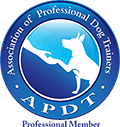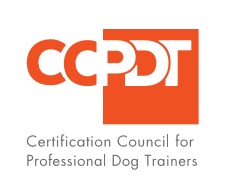Creature Feature :: Making Sense of Dog Play
Dog interactions are so different from human interactions, so much sniffing and snorting and thrashing about. There seem to be as many styles of dog play as there are dogs, so it can be a challenge to discern what is play and what isn't. It's no wonder we're at a loss when a fight starts that we never saw coming. Still, there are some basic principles that can help you begin to translate the doggie ballet taking place before your eyes.
Howdy Do!
Polite dog introductions are a joy to behold. Polite dogs will arc toward one another, the more submissive averting his glance in deference, and will do a cursory sniff around the head and neck, followed by a more prolonged sniff of the rear and genitals. Then things will move on... Playful mates will commence with a play bow (front quarters lower than hind quarters) or invite a brisk game of chase. Quieter companions will amble on after making the acquaintance.
My own dog is the poster pup for yucky greeters... straight toward the other dog with a steady gaze, stiff stance and with her ruff up, giving the dog a sniff of proctologic precision, and then, depending on the other dog, she will cautiously tee (put her chin over the back of the other dog) to see what she can get away with. Trista's version of talkin' trash!
The show of hackles, also known as piloerection, is an indication of a heightened state of arousal. It is not necessarily an indication of a dog about to act aggressively, though, depending on the dog, the winds could certainly blow in that direction. But what it communicates to dogs in the vicinity is that she is in an aroused, unstable state. Not long afterwards will come the shake-off, when the dog will shake her body as if shaking off water. This communicates to the group that she is now in a calmer, more stable state and is not as likely to be rash or reactive.
Dogs At Play
The purpose of play is to rehearse important natural behaviors: hunting, fighting, fleeing, and sexual behavior. So it's not surprising that activities such as biting and chasing are part of play. And, though most dogs have been neutered, it is perfectly natural that their play would include sexually derived behaviors like mounting and humping.
Different breeds tend to practice different play styles, and this should be a consideration when choosing a playmate. Standard poodles prefer games of chase accented by polite play bows and are completely put off by the rude body slamming, paw jabbing style of boxers.
Another important characteristic of good play is role reversal. The chaser becomes the chased; the biter becomes the bitten. For this reason, size disparity is undesirable. How frustrating for a little terrier to be consistently manhandled by its pit bull playmate, even if both dogs like to wrestle! Like a feather-weight sparring with a super-heavyweight.
An equally serious concern inherent in size disparities is that of predatory drift, in which a smaller dog (or cat) moves in a prey-like way that triggers a sudden predatory response from a larger dog or a group of dogs. This is a recipe for potentially deadly disaster.
Quarrels Happen
Short, noisy quarrels are a natural occurrence in dog interactions and can be instructive, given that the receiver understands and respects the message of the sender. Should the message be ignored, things can escalate.
My clients have a rude adolescent male dobie mix named Sparky*, who has proven to be too strong a force for a great many dogs. In a recent play session between him and Trista, my 4-year-old German Shepherd female, Sparky put his forelegs on Trista's back immediately upon meeting her. In human terms, this is a bit like punching a stranger playfully in the arm upon meeting him on the street. In response, Trista snarked him, growling and turning to bite and chase him away -- a perfectly appropriate correction for a mature female to give a rude young hoodlum. In doggie terms, she was saying "Knock it off, you whippersnapper! Show a little respect!" Sparky's response was similarly appropriate; he took the snarking respectfully, fleeing from her and not pushing his luck. Over the course of their interaction, they hit their stride -- Sparky gamely allowed Trista the joy of the chase, occasionally bouncing into her to incite her to play but never again jumping up on her.
Sparky needs many such interactions with dogs who can offer an appropriate, inhibited correction. Without such an education, his behavior could someday elicit a more dangerous response from a dog with less tolerance, a dog who will escalate his response into a fight.
Take a Break
Aroused play, when allowed to continue for too long, can spiral into a fight. Dogs will often take short breaks from play, giving themselves a chance for a bit of a breather. If they are not doing it voluntarily, you must step in and impose a short break every two to three minutes. Call your dog away or go get him; then ask for a "sit" or "down" for 30 seconds before releasing him back to play.
Points of Friction
Doorways and narrow passages can heighten arousal and provoke friction. If, when entering a dog park, dogs have gathered at the entrance, wait for their owners to call them away or for them to get bored and disperse. It can be intimidating for the arriving dog to be surrounded by a barrage of dogs. Practice the same etiquette with your own dog.
Also be attentive to dogs' behaviors around resources such as tennis balls or the water bowl. Be wary of dogs who get stiff, show their eye whites, or lift a lip when other dogs get too close to them with the prized possession.
Parenting
Ultimately, you must decide whether you feel comfortable with the interactions that your dog is having and whether your dog is enjoying his playmates. Look for signals of stress such as lip licking or yawning, for avoidant behavior like hiding behind you, or for escapist behavior like jumping up or clawing at you. These are calls for help and should not be ignored. As your dog's guardian, he is trusting you to intervene on his behalf, to make choices for him that he cannot make for himself.
Sometimes the energy of the dog run can be electric with tension, with several dogs snarking each other. Trista seems magnetically drawn to the eyes of these storms. If such is the case, you should remove your dog.
If other owners are allowing their dogs to play inappropriately without intervening, taking a "they'll work it out for themselves" attitude, remove your dog. That is precisely the kind of environment where play can escalate into something more serious.
Conversely, if your own dog is being a bully despite repeated breaks and time-outs, remove your dog. Allowing him to practice such behavior is giving him the opportunity to perfect an undesirable skill.
Matinee at the Doggie Ballet
I can remain transfixed for hours watching the beauty of loose, happy play -- eyes bright, mouths lax and gaping, tongues lolling, tails swinging happily. Sometimes it's graceful with its play bow invitations; sometimes it's athletic with its feints and jabs. Whatever its flavor, the most indicative characteristic of play is its wasteful use of energy. A playful dog will make loose, bouncy, exaggerated lateral movements, while a dog with more serious intent will have an economy of motion.
So, go to your local dog run, find yourself a front-row seat and enjoy the show!
(*) Names have been changed to protect the innocent.




